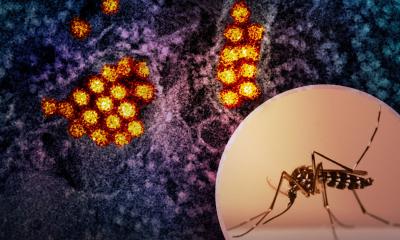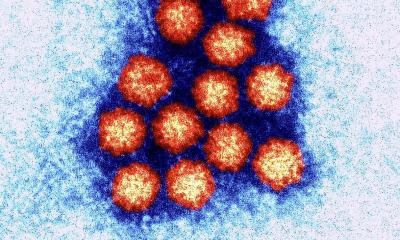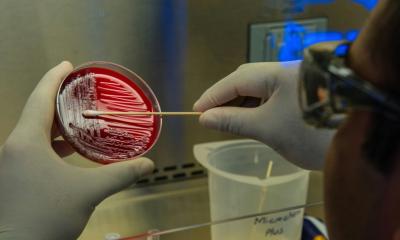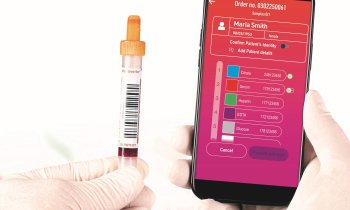MERS
First reported autopsy of patient with MERS provides critical insights
Since 2012, at least 1,500 individuals have developed Middle East respiratory syndrome (MERS), resulting in more than 500 fatalities. Only now are results being reported of the first autopsy of a MERS patient, which was performed in 2014. Not only do these findings, published in The American Journal of Pathology, provide unprecedented, clinically-relevant insights about how MERS progresses, they challenge previously accepted ideas about MERS and the relevance of current animal models. With the number of autopsies performed on the decline, these findings underscore the critical information autopsies can provide regarding emerging infectious disease.

"The article by Dianna L. Ng et al exemplifies the value of a well-performed study of an autopsy. The long interval between the emergence of this dangerous disease three years ago and the first autopsy reminds us of the lost opportunity that the decline of the performance of autopsies, particularly research-oriented post-mortem examinations in the United States represents," commented noted expert in the field David H. Walker, MD, Director of the University of Texas Medical Branch (Galveston) Center for Biodefense and Emerging Infectious Diseases.
The 45-year-old male patient analyzed by autopsy was one of a large patient cluster treated at a hospital in the United Arab Emirates in April 2014. He worked in a storage room at a paramedic station, with no patient-care duties or exposure to camels. Between April 2 and April 10, 2014, he rapidly progressed from having fever, runny nose, and cough to death. On the last day of his life, he was treated with 100 mg of the steroid hydrocortisone every eight hours. The autopsy was performed 10 days after his death.
The autopsy showed that the lungs were the main target organs of MERS, with diffuse damage to the air sacs (alveoli) observed. Using immunohistochemistry, the researchers identified anti-MERS-CoV antibodies in specific cells in the lungs (pneumocytes and epithelial syncytial cells) and bronchial submucosal glands. "Infection of bronchial submucosal glands is a likely source of viral shedding in respiratory secretions leading to human-to-human transmission," explained lead investigator Sherif R. Zaki, MD, PhD, Chief of the Infectious Diseases Pathology Branch at the Centers for Disease Control and Prevention (Atlanta).
Patients with MERS often show signs of acute kidney failure, and MERS-CoV has been found in the urine of MERS patients. In this case, although certain signs of pathology were seen in this patient's kidneys, immunohistochemistry showed no evidence of MERS-CoV. "This suggests that the acute renal failure in this patient was not caused by direct renal infection, but likely by other factors such as hypotension," noted Dr. Zaki. Such new insights suggest that MERS researchers and clinicians treating MERS patients should focus their infectious control strategies on the lungs. Similarly, no sign of MERS-CoV infection was found in the brain.
In many ways findings from this autopsy differ from observations made using animal models. "In the case of MERS, development of numerous animal models was undertaken prior to knowledge of the human pathology," remarked Dr. Walker. "Although these experimental studies were able to suggest the target cells of the virus and histopathology of MERS, only some of the features of the animal models conform to the observations in the human autopsy. Until the truth-testing of a large series of autopsies is reported, judgment will favor those models supported by the observations in a single postmortem examination." He cautioned that reliance on animal models can undermine the value of the results generated when they are used to test MERS vaccines or antiviral treatments.
Noting the dramatic reduction in the number of autopsies performed in the U.S. in recent years, Dr. Walker observed that the problem will worsen as pathologists' expertise in autopsy erodes as more of their time is allocated to analyzing surgical tissue from a single organ rather than conducting comprehensive analyses of all organ systems.
The MERS coronavirus (MERS-CoV) was first isolated from the sputum of a patient who died of respiratory and renal failure in Saudi Arabia in 2012. Although more than three-quarters of MERS cases have originated in Saudi Arabia, including an outbreak of 515 cases in the spring of 2014, the syndrome has been reported in 26 countries including the U.S. Clinically, patients may show symptoms of upper respiratory tract illness, severe pneumonia, and multi-organ failure, although some infected individuals may exhibit no symptoms. MERS is diagnosed most often in elderly men and patients suffering from other serious chronic illnesses, such as diabetes mellitus, hypertension, or chronic renal, lung, or heart disease. MERS is thought to spread to humans from infected humans or infected dromedary camels.
Source: Elsevier Health Sciences
08.02.2016











